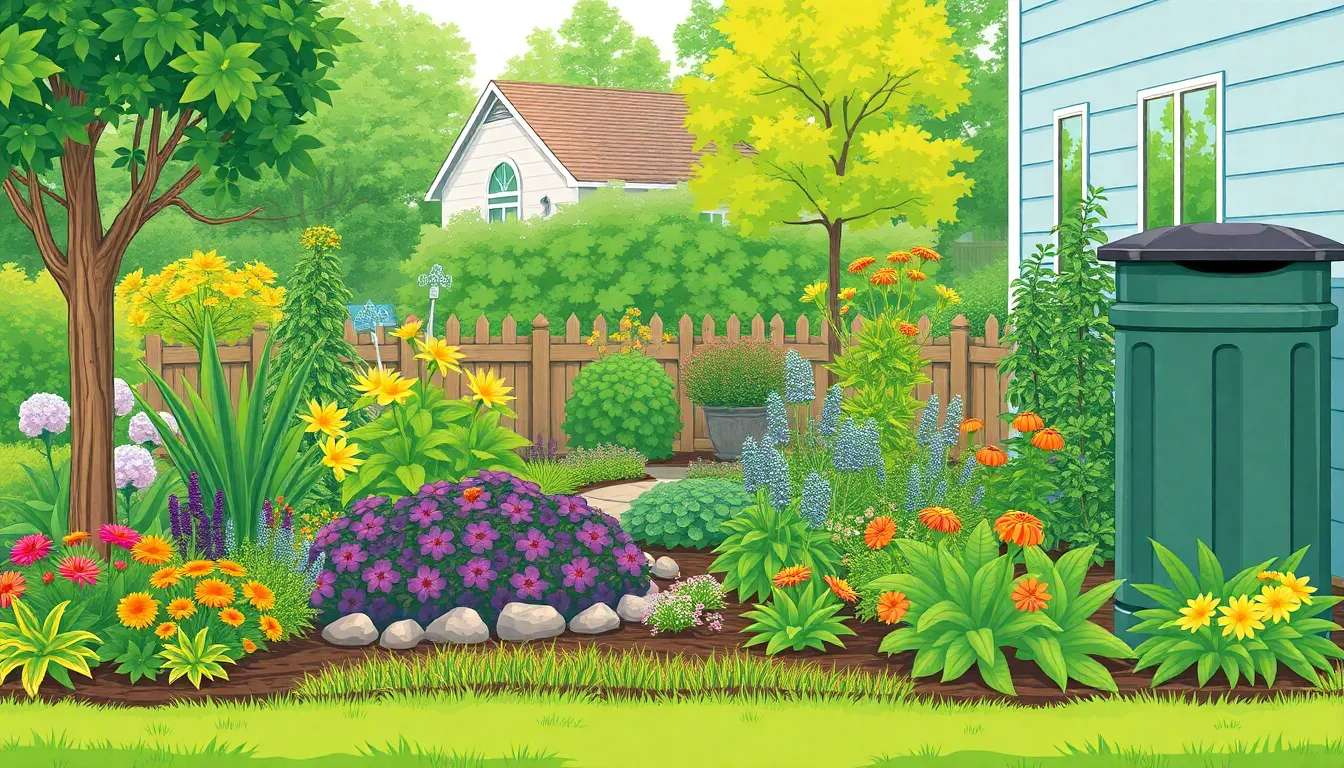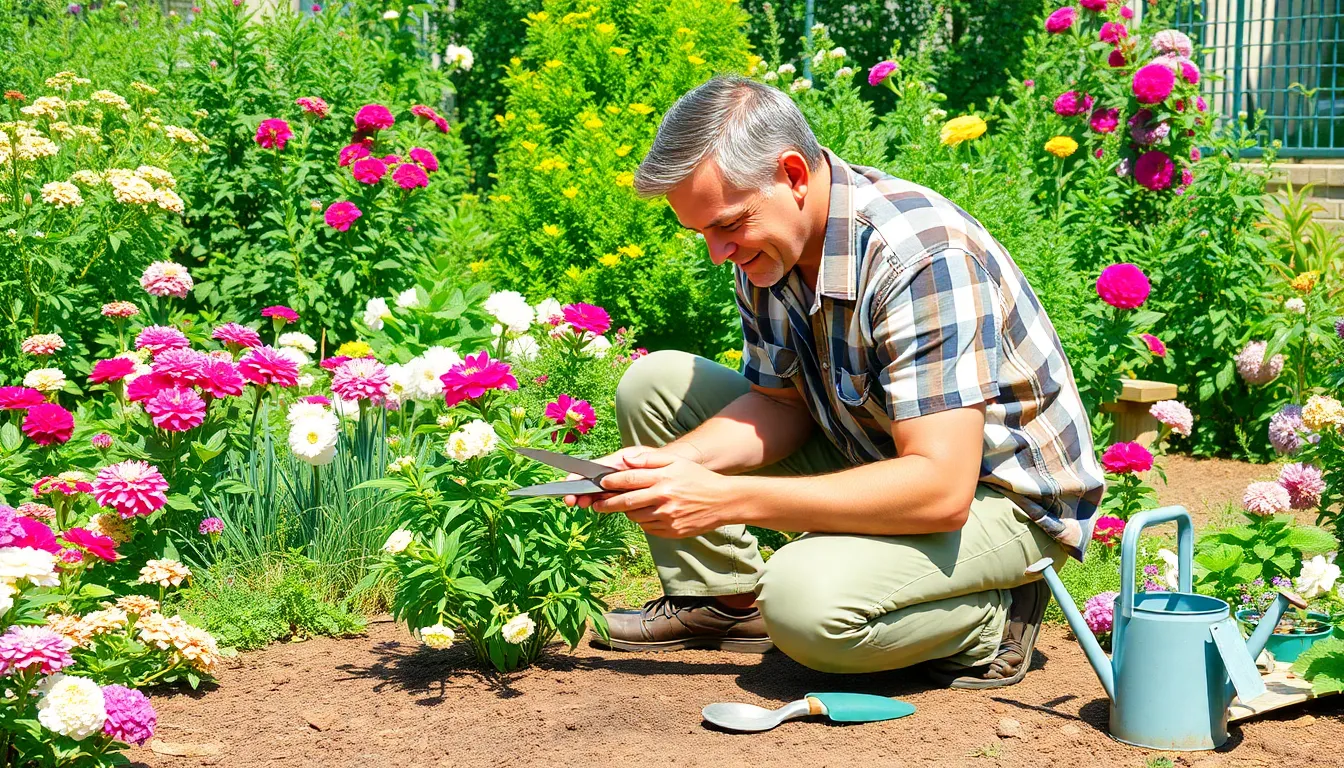In a world where the planet seems to be throwing a tantrum, sustainable home practices are like a soothing lullaby for Mother Earth. Imagine transforming your humble abode into a green sanctuary where every light bulb and recycled bottle sings in harmony with nature. It’s not just about saving the planet; it’s about saving your wallet too. Who knew going green could feel this good?
Table of Contents
ToggleUnderstanding Sustainable Home Practices
Sustainable home practices involve integrating eco-friendly methods into daily living. Reducing energy consumption remains essential, with energy-efficient appliances cutting energy bills significantly. Homeowners can opt for LED lighting or smart thermostats to enhance efficiency.
Water conservation plays a crucial role in sustainability. Utilizing low-flow fixtures and rainwater harvesting systems minimizes water waste. Organic landscaping, by using native plants, often requires less irrigation and promotes local biodiversity.
Waste reduction forms another vital component of sustainable living. Implementing a composting system helps divert organic waste from landfills while producing nutrient-rich soil. Choosing products with minimal packaging supports a circular economy, reducing overall waste.
Sourcing sustainable materials for home improvements further boosts eco-friendliness. Bamboo flooring and recycled glass countertops offer durable, attractive options with lower environmental impact. Investing in high-quality materials can lead to longevity, ultimately reducing the need for frequent replacements.
Incorporating renewable energy systems can yield long-term savings. Solar panels generate clean energy while decreasing reliance on fossil fuels. Houses equipped with solar energy systems sometimes benefit from incentives or tax credits.
Creating a sustainable home requires a multifaceted approach. Each method, from energy management to waste reduction, contributes significantly. Implementing these practices fosters an eco-conscious lifestyle, enhancing personal well-being and protecting the environment.
Benefits of Sustainable Home Practices

Sustainable home practices offer numerous advantages for both individuals and the environment. Embracing eco-friendly habits leads to a healthier planet and economic benefits.
Environmental Impact
Reducing energy consumption significantly lowers carbon footprints. Energy-efficient appliances and smart technologies lead to sustainable energy use. Lowering energy demand helps mitigate climate change effects. Sustainable landscaping enhances biodiversity, providing habitats for wildlife. Rainwater harvesting systems promote responsible water usage, benefiting local ecosystems. Composting organic waste keeps landfills from overflowing. Sustainable materials reduce resource depletion, ensuring future availability.
Economic Savings
Significant monetary savings come from implementing sustainable practices. Households that use energy-efficient appliances often experience reduced utility bills. Over time, investments in solar energy systems yield substantial returns. Choosing low-flow water fixtures decreases water bills and conserves resources simultaneously. Products with minimal packaging also tend to save money. Long-term savings arise from lower maintenance costs associated with durable materials. Sustainable practices lead to an overall reduction in household expenses.
Implementing Sustainable Home Practices
Sustainable home practices significantly enhance environmental health and financial savings. Focusing on energy efficiency and water conservation provides a solid foundation for creating a green living space.
Energy Efficiency
Energy efficiency stands at the forefront of sustainable practices. By using energy-efficient appliances, homeowners reduce their energy consumption while enjoying modern conveniences. LED lighting offers a longer lifespan and consumes less power compared to traditional bulbs. Installing smart thermostats allows users to optimize heating and cooling based on their daily schedules, further decreasing energy waste. Home insulation improvements minimize heating and cooling demands, resulting in lower energy bills. These strategies not only reduce the carbon footprint but also encourage a sustainable lifestyle.
Water Conservation
Water conservation plays a crucial role in sustainable home practices. Low-flow fixtures effectively reduce water usage in bathrooms and kitchens without sacrificing functionality. Rainwater harvesting systems collect rain for irrigation and other non-potable uses, reducing dependence on municipal water supplies. Replacing traditional irrigation systems with drip irrigation can minimize water evaporation and runoff. Promoting native plants in landscaping requires less water, enhancing biodiversity while maintaining aesthetics. Together, these practices support water sustainability while benefiting the environment.
Popular Sustainable Home Practices
Sustainable home practices enhance both environmental health and financial savings. Various methods create eco-friendly living spaces.
Using Renewable Energy Sources
Adopting renewable energy sources significantly reduces reliance on fossil fuels. Solar panels harness sunlight, providing clean electricity for households. Wind turbines can supply power in areas with consistent winds. Geothermal systems utilize the earth’s natural heat to regulate indoor temperatures efficiently. Benefits include reduced utility bills and minimal carbon footprint. Tax incentives often make these systems more affordable for homeowners. Long-term savings accumulate, ensuring financial rewards alongside ecological benefits.
Choosing Eco-Friendly Materials
Selecting eco-friendly materials transforms construction and renovation projects. Bamboo flooring stands out for its sustainability, as it grows quickly and requires minimal resources. Recycled glass countertops offer unique aesthetics while conserving raw materials. Low-VOC paints and sealants improve indoor air quality and minimize harmful emissions. Additionally, reclaimed wood provides character and reduces deforestation. These materials often last longer, lowering maintenance and replacement costs. Prioritizing sustainability in material choices results in a healthier environment and enhances the overall value of a home.
Challenges in Adopting Sustainable Practices
Adopting sustainable practices presents various challenges that homeowners may encounter during their journey towards greener living.
Initial Costs
Initial costs often deter many homeowners from pursuing sustainable options. Investing in energy-efficient appliances, solar panels, or high-quality insulation requires significant upfront capital. Even though these systems yield long-term savings, the initial financial outlay can create a perception barrier. Exploring financing options or state incentives may help offset these costs. Additionally, homeowners might consider incremental improvements over time rather than a complete overhaul at once.
Lifestyle Changes
Transitioning to sustainable living necessitates lifestyle changes that some homeowners find challenging. Incorporating practices such as composting, using public transport, or reducing consumption may disrupt established routines. These changes often require time and effort, prompting a steeper learning curve. Education about sustainable habits can enhance commitment to these new practices. Emphasizing the benefits, both environmental and financial, can motivate homeowners to adopt a more eco-conscious lifestyle. Implementing small, manageable habits allows for a smoother transition to sustainability.
Embracing sustainable home practices isn’t just a trend; it’s a vital step toward a healthier planet and a more economical lifestyle. By making conscious choices in energy use, water conservation, and material selection, homeowners can significantly reduce their environmental impact while enjoying long-term financial benefits.
The journey toward sustainability may come with challenges, but the rewards are well worth the effort. Small changes can lead to meaningful improvements in both personal well-being and the environment. As awareness grows and more individuals adopt these practices, the collective impact can foster a greener future for generations to come.



